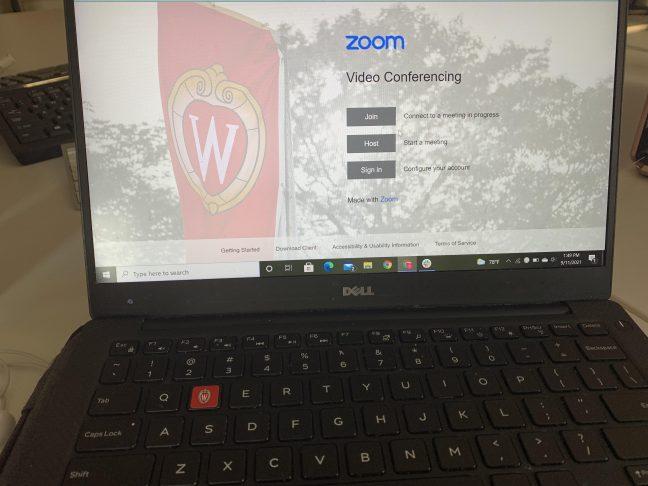Videoconferencing apps have risen in popularity throughout the pandemic to become a part of most people’s daily lives, but a new study from the University of Wisconsin Department of Electrical and Computer Engineering found that videoconferencing apps still have access to users’ audio even when they are muted.
Most users expect that pressing the mute button stops videoconferencing apps from accessing their audio. But videoconferencing apps still have access to users’ audio when the mute button is activated and can process it however they want, according to Kassem Fawaz, an assistant professor of electrical and computer engineering who worked on the research.
The study, however, did not find any evidence that these companies are using the data, Fawaz said.
“It’s as if the door is open but they [videoconferencing apps] choose not to walk in the room,” Fawaz said. “This is the analogy. So they have access to the audio, but they choose not to process it except for some limited cases.”
First-year Ph.D. student Yucheng Yang said the research was inspired when Fawaz noticed that the light indicator for microphone access stayed on when he was on mute. The notifications telling users they’re muted when they make noise pointed to another clue that apps could still access the audio even when the mute button was in use.
Fawaz said he suspected the button wasn’t a total mute function before the research, but the study proved it. It turns out many users did not share his suspicions.
Fawaz said the most striking finding from the study was that videoconferencing apps don’t match user expectations. The first round of research asked around 300 participants what they thought the mute button was doing and what they thought the mute button should do. Fawaz said most people seem surprised that videoconferencing apps have access to this data.
“Generally, as a user of technology, you have to always be concerned about how you’re using that technology and what privacy controls do exist and how you’re best using these privacy controls,” Fawaz said.
Yang said the researchers were able to access what was going on in the backend on CISCO’s Webex, but not on other apps. Coincidentally, the team found that Webex was collecting telemetric data.
Since the paper’s release, Webex stopped collecting telemetric data from users while they are on mute. Yang said Webex used the data to improve audio quality by collecting minimum and maximum averages of users’ voices.
In a statement, Webex said that it never sends audio to the cloud while users are on mute, and telemetry was always sent to the cloud over a secure connection — meaning third parties did not have access to this data. Webex also did not monitor or interfere with meeting traffic or content, according to its statement.
While videoconferencing apps aren’t using data from users while they’re on mute, Fawaz said the companies still have the capability to listen to the data. Machine learning technology would allow apps to run local analyses of audio to determine users’ interests, and Fawaz said the apps could send information about user interests to the cloud.
The same technology that allows Siri and Alexa to detect what users say would allow videoconferencing apps to detect user activities, Fawaz said.
“Do they do this?” Fawaz said. “Probably not. Can they do this? Yes they can do this. Does the technology allow them to do so? Definitely.”
Though videoconferencing apps have access to the microphone while users are on mute, Yang said they don’t have access to the camera when users turn it off. Turning the camera off on the app likely causes the operating system to shut off the camera systemwide.
Users take precautions for cameras with camera covers, Yang said, but the same precautions are harder to take when it comes to stopping access to audio data.
“Some privacy-concerned people, they want to try to have this operating system level mute button to completely turn off your microphone,” Yang said. “People talk about [how] they should have a systemwide mute button and people can use that similar to a camera block.”
Another way to stop access to audio data is connecting a headset with a hardware mute button, Yang said. Users can turn off their microphone using the hardware on the headset to stop transmitting audio to the app.
UW collaborates with NASA to launch small satellites, collect unprecedented data
If users have concerns about the way videoconferencing apps process their audio while they’re muted, they can make some changes in their settings. But for students who are worried about who has access to their audio data, Fawaz said professors can’t access it.
“When you’re muted in a class, we don’t hear you,” Fawaz said. “So don’t worry about it — we [professors] don’t have a secret tool of hearing you while you’re muted.”


